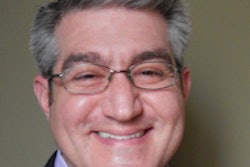
MONTREAL - Patient portals are an opportunity for patients to get timely access to their radiology information. But if they aren't designed properly, they can exclude radiologists from the care process, according to Dr. Ella Kazerooni, who discussed patient portals at last week's Canadian Association of Radiologists (CAR) meeting.
Technology has permitted patients to find out more about their care through avenues such as patient portals, said Kazerooni, a professor of radiology, the associate chair for clinical affairs, and the director of cardiothoracic radiology at the University of Michigan in Ann Arbor.
 Dr. Ella Kazerooni from the University of Michigan.
Dr. Ella Kazerooni from the University of Michigan.
Yet patient portals are frequently designed where the referring physician has discretion as to when a radiology report will be housed on a patient portal and what report elements will be found there, she noted. Patients or families may want the radiology report available as soon as possible, but the referring physician may want to see the report and manage it, according to Kazerooni.
"Should it be an automatic seven or 10 days before the reports get to the patients because the ordering physician doesn't want us [radiologists] to communicate directly with the patient through the portal?" she asked.
The delay of access of information to the patient is many times unnecessary, charged Kazerooni, who delivered her talk on April 24, the opening day of the meeting.
"A lot of [imaging] test results are normal, or they have abnormalities that have no clinical relevance," she said. "If a patient has back pain, and the MRI scan shows that patient has a herniated disk, is there any reason that the patient should not know that right away? It will explain the patient's pain."
Apart from the frequent occurrence of patients being denied ready access to the radiology report, patient portals are often technically designed so that patients cannot directly contact their radiologist but only their referring physician.
"It is not something that they are used to, but I would argue that radiologists should want that communication with the patient," Kazerooni said. "They need to be willing to communicate with the patient."
Kazerooni discussed the need for healthcare to be patient-centered and personalized, which means existing assumptions about what constitutes quality care need to be questioned. As an example, one-stop shopping where patients undergo numerous examinations in a day is not an effective approach for all patients, she said, giving an example of an 82-year-old patient with severe aortic stenosis who might have to undergo a blood draw, echocardiogram, CT scan, cardiac catheterization, and more tests in a single hospital visit.
"We think about quality in terms of efficiency and having multiple interactions with the healthcare system," Kazerooni said. "We think patients want all their tests conveniently back-to-back on the same day. For young, healthy patients who may have time pressures, they may want it that way. We can't assume how patients want the care delivered."
Historically, radiology reports have consisted of free text, and the descriptors used by radiologists were left to interpretation by the referring physician, but this approach has a downside, according to Kazerooni. "You could not cull data from those reports," she said.
Structured reporting in radiology has permitted both referring physicians and patients to easily find information, and in the coming era of "personalized medicine or precision medicine," which Kazerooni said represents the intersection of informatics and healthcare, more data points can now be examined with computers that can be potentially of value for patients.
Kazerooni warned that "disruptive technologies" such as handheld ultrasound scans are failing to reduce requests for ultrasound imaging. Instead, they are leading to larger volumes of referrals to radiologists for follow-up imaging, because nonradiologists are seeing results where the clinical significance is unclear, she said.
Patient portals are "game changers," acting as a gateway or first point of contact that patients have with the radiologist, and they need to be focused on patients and not provider-centered, she stressed.
"If we allow the rest of the providers in the system to control information about our patients, then we are not doing our duty by patients and families," Kazerooni said. "We should be advocating when these portals are being set up, for getting our [radiologists'] information into the hands of patients, and being able to answer the patients' questions. Right now, we rely on referring physicians to translate the information, and we are cut out of the loop completely."



















